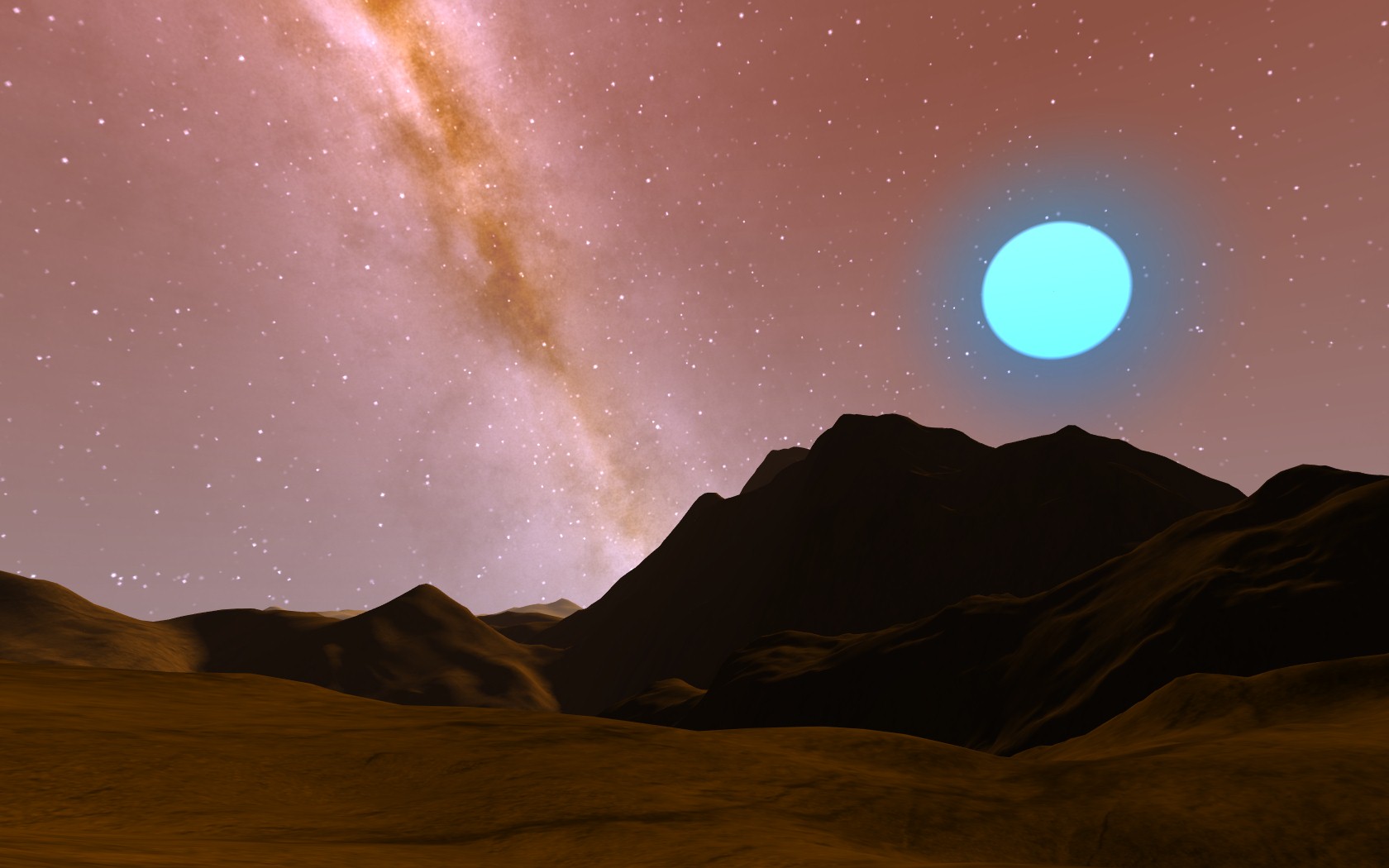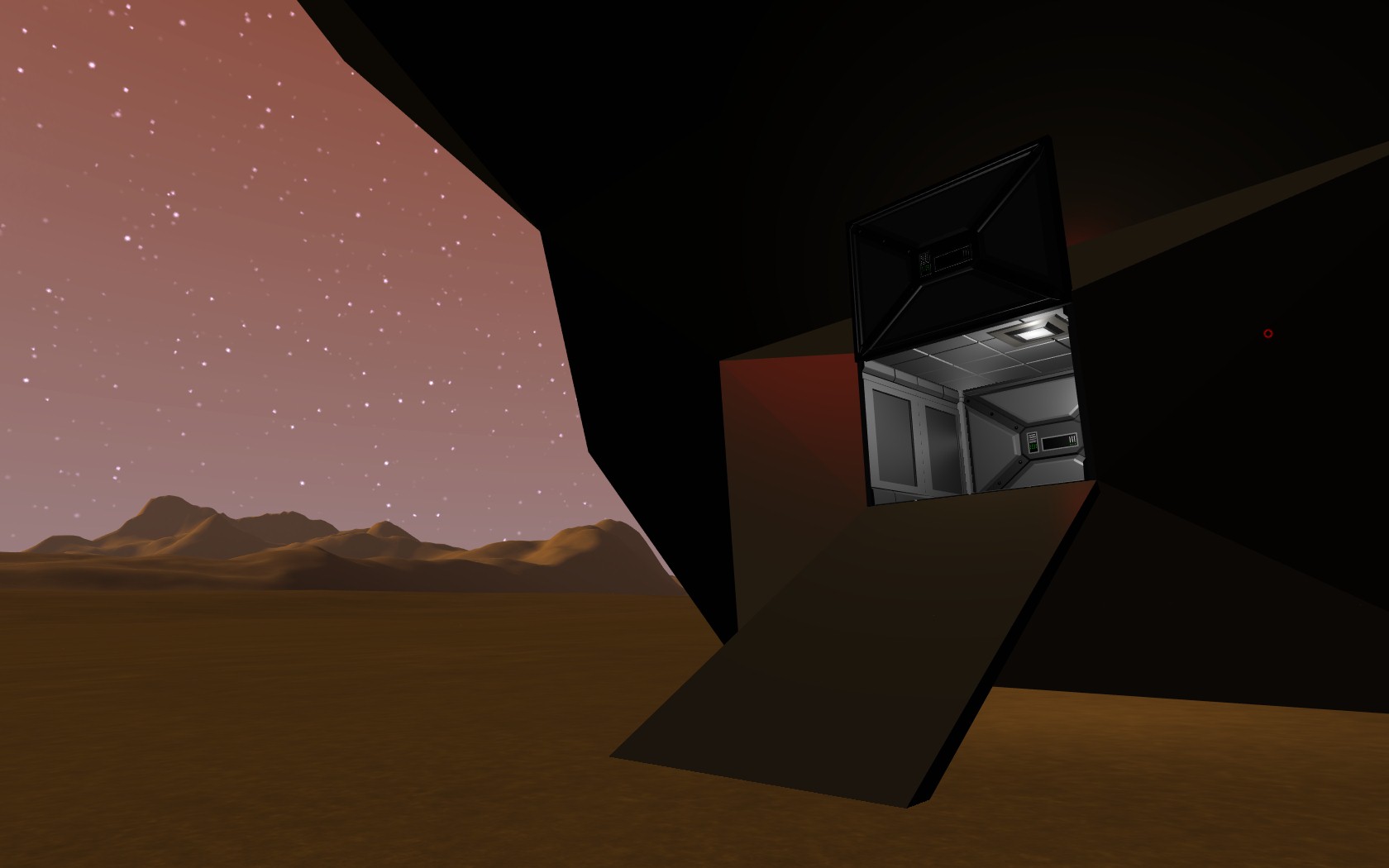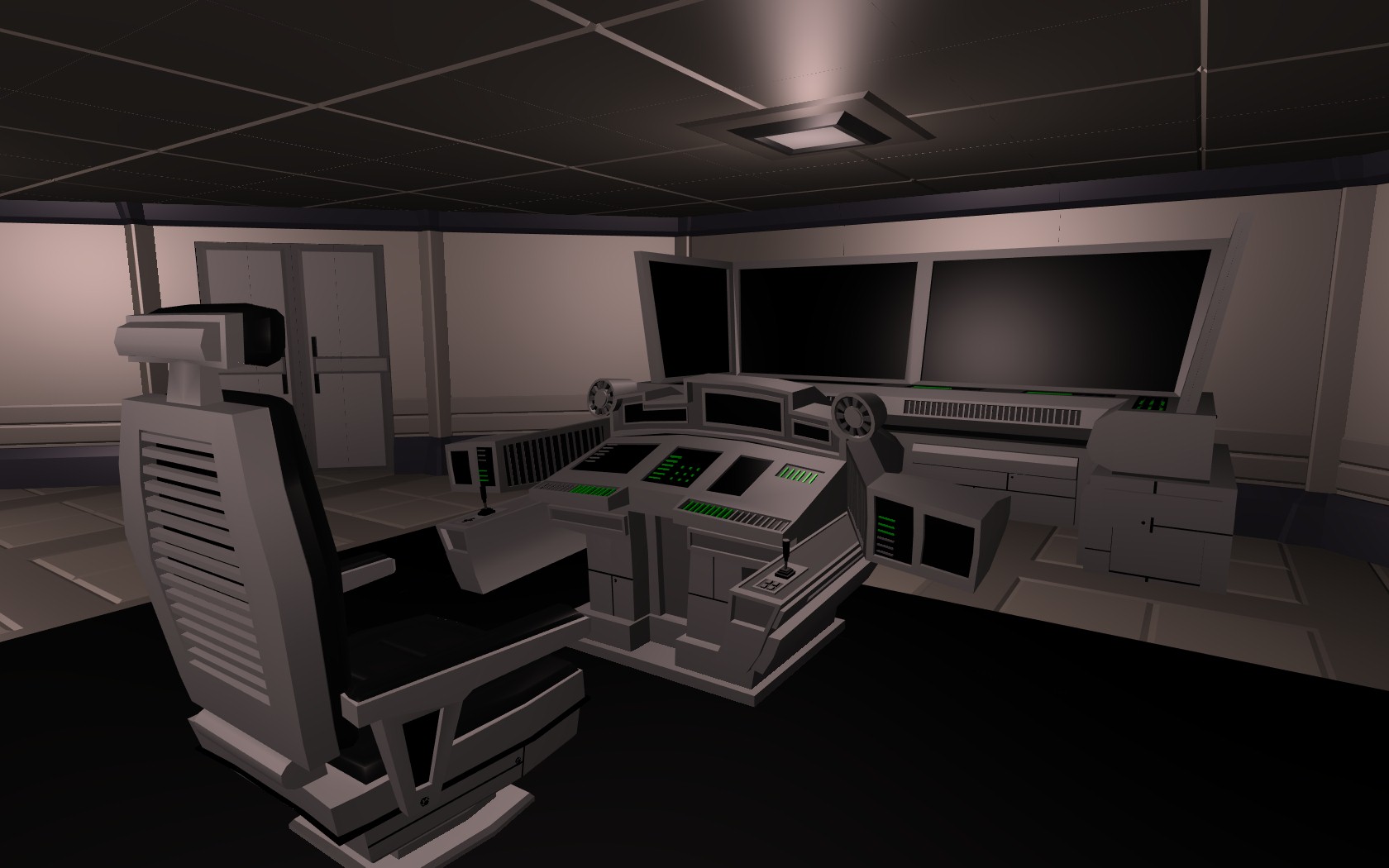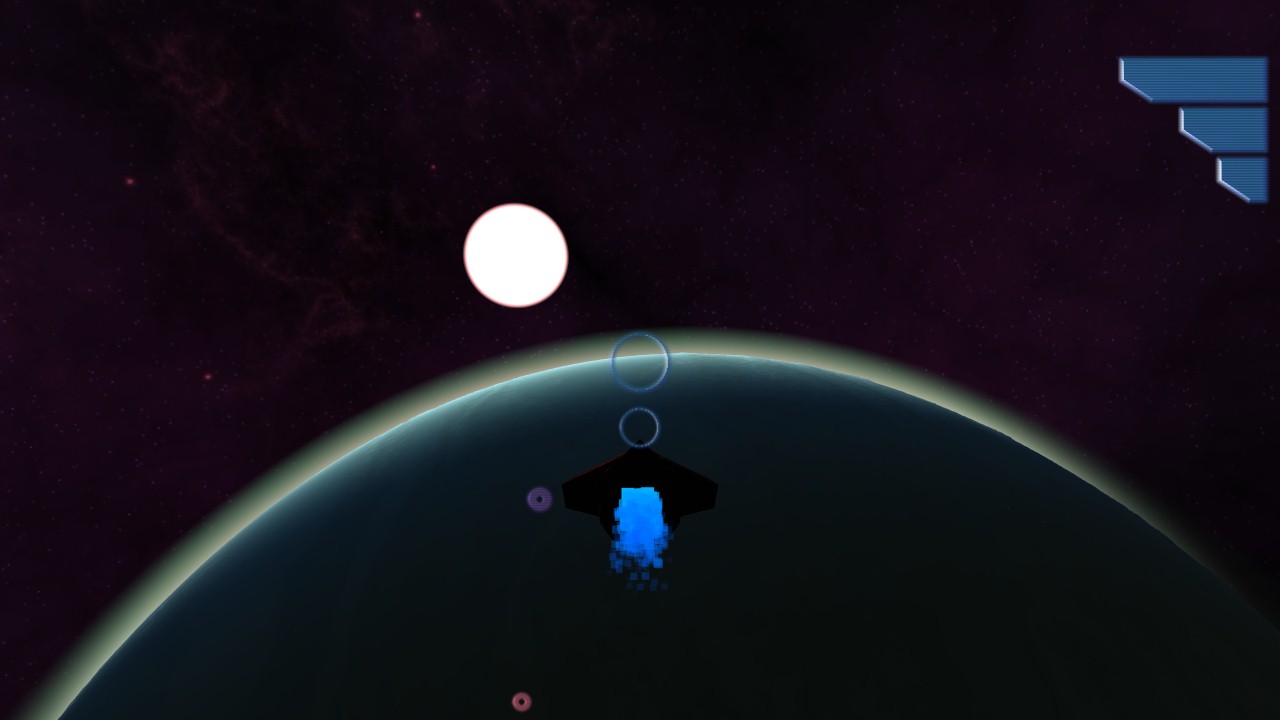When you start the game, you find yourself on the surface of some asteroid. A small green circle hovers in your view, indicating the location of your ship. Using normal WASD controls and the spacebar to jump, you can navigate to your ship and approach the airlock.
Passing through the airlock leads you into the interior of the vessel, where you can wander through the halls and rooms until you find your way to the cockpit and pilot controls.
Once you sit down at the pilot controls, the game switches the view to 3rd person and you can control the ship. There are currently 2 speed settings: one for combat and landing, and another for travel between celestial bodies.
Flight between celestial bodies is pretty fun. I only ever saw asteroid-sized planetoids, but that's ok. As far as I can tell, the majority of the planetoids have a pile of random crates and barrels and some sort of electronic storage devices that either give you random snippets of logs from other pilots or upgrades to your ship's decryption protocols. Landing is a little tough right now, since there's a bit of Newtonian-style inertia and sometimes your ship bounces across the surface for a bit before coming to a rest. Once you land you can leave the pilot's seat, walk back through the ship to the airlock, and leave to explore the surface. The planetoids are procedurally-generated with fractal landscapes, and, as you can see in the picture above, they look pretty cool. As far as I can tell, different planetoids have different amounts of gravitational force, because it seems like you can jump higher on some planetoids than others.
There is combat and your ship has 2 weapons: some sort of projectile and a missile weapon. Every once in a while you'll find an enemy ship flying around one of the planetoids. The game has options on combat difficulty that I haven't yet played with, but I imagine it could change the amount of damage the enemy ship can give and take or something of that nature.
Now, everything is pretty simplistic, to be sure. The ship has rudimentary roll, pitch, and yaw controls as well as linear thrusters in 5 directions (no way to go down). The HUD doesn't have much information at all and there isn't any autopilot or anyway to map out a course. Exploration, for me, at least, consisted of pointing my ship at one of the objects that seemed to be the closest and switching to the faster speed. Often I would overshoot the object, since there was no distance indicator or heading. The difference between the combat and cruise speeds is enormous, so I often needed to get as close as I could to a planetoid, slow to combat speed to reorient myself, switch quickly to cruise speed and then back and forth between the two speeds in short bursts to cover the remaining distance. Combat is also a little simple. You have to switch between the two weapons instead of being able to fire primary and secondary at the same time. The missiles automatically track the nearest enemy, which is fine, since as far as I experienced, you only ever find one enemy at a time, but still a bit annoying. Additionally, the lack of first-person view for flying the ship annoys me.
After that list, however, there is something I need to mention:
There
Are
NO
Loading Screens.
Anywhere. Once you are in the game, you're in the game the whole time. The longest process you'll encounter is moving between the inner and outer airlocks, and even that is a much quicker process than real airlocks.
So that entire experience, from starting on the surface of some asteroid, finding your ship, climbing in, finding the cockpit, climbing into the pilot's controls, launching from the surface and flying to another asteroid, landing on that asteroid, climbing out of the pilot's controls, walking to the airlock, leaving the ship and finding random stuff on the surface is all one continuous action. There are no loading screens, no pauses, no breaks. The only shift in perspective comes in the pilot's seat, and it happens in an instant.
This leads to a phenomenally immersive experience, even though the graphics and gameplay themselves need polish. The fact that I can move my character up into the ship, take a wrong turn and wind up in a bathroom, backtrack and finally make my way to the cockpit, then fly from one asteroid to another, finding missiles and upgrades and people trying to kill me, all that is just incredible to me. That's exactly what I want in a game. There aren't any loading screens in real life, after all. I don't know how the developers accomplished what they did, but I am really excited to see what they do with this game.








